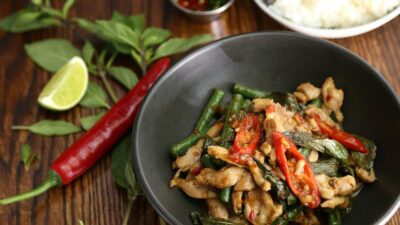Healthy Indian Cooking: Combining Tradition with Nutrition
Indian cuisine is renowned for its vibrant flavors, rich history, and diversity. With a wide array of ingredients and cooking techniques, it offers an opportunity to create delicious meals that can also be nutritious. As modern eating habits evolve towards healthier choices, the fusion of traditional Indian cooking methods with contemporary nutritional wisdom has never been more relevant. Here’s a comprehensive look at how to embrace healthy Indian cooking while staying true to its roots.
The Essence of Indian Cooking
At its core, Indian cooking is built on the principles of balance, flavor, and aromatherapy. Traditional meals typically include a variety of spices, grains, legumes, fruits, and vegetables. Each component not only adds taste but also plays a crucial role in maintaining health.
Spices for Health
Spices are the heart of Indian cuisine, serving not only to enhance flavor but to contribute health benefits. Turmeric, known for its anti-inflammatory properties, is often used in curries. Cumin aids digestion and balances blood sugar levels, while ginger can help combat nausea and enhance immunity. Incorporating such spices into daily cooking can enhance both the taste and nutritional profile of meals.
Whole Grains and Legumes
Traditional Indian meals often feature whole grains like brown rice, millet (bajra), and quinoa. These grains are high in fiber and packed with complex carbohydrates, which provide sustained energy. Additionally, lentils and beans (dal) are staple sources of protein and iron, making them indispensable in vegetarian diets. Opting for whole grains and legumes not only supports a nutritious diet but also honors the values of sustainability and local agriculture.
Reinventing Classic Dishes
While traditional recipes are treasured, modern cooking encourages adaptations that cater to healthier lifestyles. Here are a few ideas for reimagining classic Indian dishes:
1. Using Healthy Cooking Oils
Instead of ghee or excessive oil, consider alternatives like olive oil or coconut oil, which provide healthier fats. Use oils sparingly and incorporate techniques like steaming or grilling to reduce the need for heavy frying.
2. Incorporate More Vegetables
Traditional dishes can be enriched with a variety of seasonal vegetables. For instance, a classic paneer butter masala can be transformed by adding spinach, bell peppers, or carrots, making it not only more colorful but also more nutritious.
3. Emphasizing Fermentation with Raita
Fermented dairy products like yogurt are key in Indian cooking. Raita, made from yogurt mixed with vegetables and spices, serves as a cooling garnish while also providing probiotics, aiding digestion.
The Power of Plant-Based Cooking
With vegetarianism being deeply rooted in Indian culture, Indian cooking offers a treasure trove of plant-based recipes. Ingredients such as chickpeas, kidney beans, and various lentils form the foundation of numerous dishes, promoting a diet rich in nutrients while also being low in saturated fats.
Mindful Eating and Portion Control
An essential aspect of healthy cooking lies not just in the ingredients but also in how we consume them. Indian meals traditionally encourage sharing and communal eating, which can promote better portion control and mindful eating practices. Utilizing smaller plates, savoring each bite, and focusing on the meal can lead to healthier eating habits.
Incorporating Modern Nutritional Science
In today’s health-conscious world, it’s beneficial to blend traditional cooking techniques with modern nutritional science. Here are some tips:
- Keto-Friendly Adaptations: Use cauliflower rice or zucchini noodles in place of traditional rice or pasta for low-carb options.
- Balanced Macros: Ensure meals have an adequate balance of carbohydrates, proteins, and healthy fats, based on individual dietary needs.
- Superfood Ingredients: Incorporate “superfoods” such as spinach, kale, and chia seeds into traditional recipes for a nutritional boost.
Conclusion
Healthy Indian cooking is about harmonizing tradition with nutrition. By focusing on wholesome ingredients, mindful cooking methods, and creative adaptations, you can create meals that not only tantalize the taste buds but also nourish the body. Embracing this fusion offers a path to vibrant health while celebrating the rich culinary heritage of India. So, let’s step into the kitchen with tradition and nutrition in mind, and embark on a flavorful journey toward better health.



